
The Power of Words: A History of Tulalip Literacy, Jan 22

syəcəb

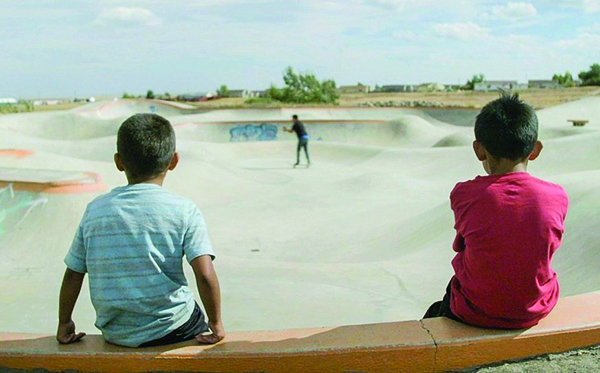
By Micheal Rios, Tulalip News
Many people continue to find it frightening when they realize just how widespread sexual abuse and violence is in our society. What was long a taboo subject and could only be discussed in whispers is now spoken aloud at rallies and public gatherings, and is turned to the loudest possible volume on social media.
According to Time Magazine, the groundbreaking anti-sexual assault and women’s empowerment movements #MeToo of 2017 and 2018’s Time’s Up upended the public conversation about women’s issues around the world, and elevated the global consciousness surrounding the obstacles women encounter in their daily lives, both personal and professional. The success of these two social movements continues to be the liberation of public discourse to include subjects and stories that were for far too long kept quiet.
Yet, as the terms sexual assault, sexual abuse, and sexual violence have permeated into national dialogue and every day conversations, there continues to be a veil of ignorance and denial to the fact that men and boys are victims as well. Often men are the neglected victims of all forms of sexual violence, including being abused as children.
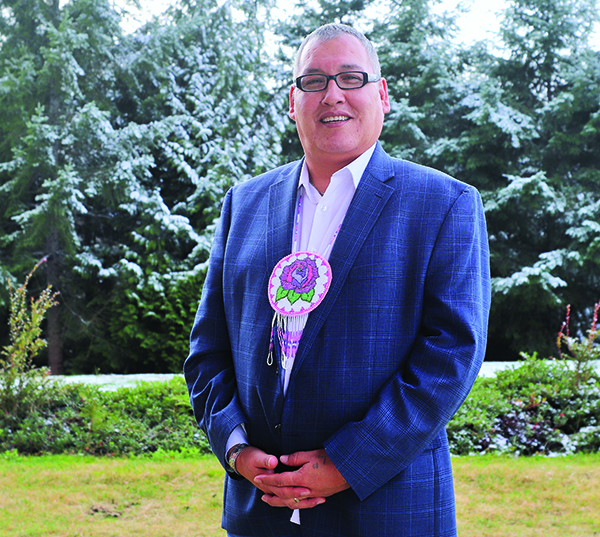
Organized by Tulalip Tribes Children’s Advocacy Center and Northwest Indian Health Board, the Tulalip community was invited to a January 13th training hosted by Lenny Hayes to offer insight while shedding light on such a dark topic. The training’s title: A silent epidemic – sexual violence against men and boys.
Lenny, a citizen of the Sisseton-Wahpeton Oyate in northeastern South Dakota, is a therapy practitioner with extensive training in mental and chemical health issues that impact the Two-Spirit and Native community. He has travelled nationally and locally presenting on issues that include historical and intergenerational trauma, violence of all forms, child welfare issues, and the rarely discussed topic that is the impact of sexual violence on men and boys.
“There is a general misconception that men are immune from sexual violence, owing to gender stereotypes of women as delicate and therefore victims, while men are either the powerful protector or perpetrators of violence,” explained Lenny during the one-of-a-kind training seminar. “Traditional masculinity is inconsistent with the position of victimhood, leading many to believe a man simply cannot be a victim of sexual abuse.
“A boy or man sexually abused by a woman is often greeted by disbelief, denial, or trivializing. Society tells us that if any part of his experience felt good, then he was not abused. Or if he did not enjoy it, then he must be gay. While a boy or man sexually abused by another male is even more reluctant to come forward because of the stigma and extreme shame faced, both internally and externally, by admitting to being victimized.”
A new study funded by the National Institute of Justice (NIJ) and published in May 2016 looked at the extent and impact of sexual and intimate partner violence against Native American victims. The study clearly shows that Native American men and boys suffer violence at alarmingly high rates.
According to the NIJ study, more than 1.4 million Native American men have experienced violence in their lifetime. This includes:
These are startling and heartbreaking statistics that were reviewed and discussed in great detail during the training. Illustrating the depth and scope of this rampant issue, especially in Native communities and on reservations, the PBS documentary Predator on the Reservation was shown. The film details a Frontline and Wall Street Journal investigation into the decades-long failure to stop an Indian Health Service (IHS) doctor accused of sexually abusing Native boys for years, and examines how he moved from reservation to reservation despite warnings.
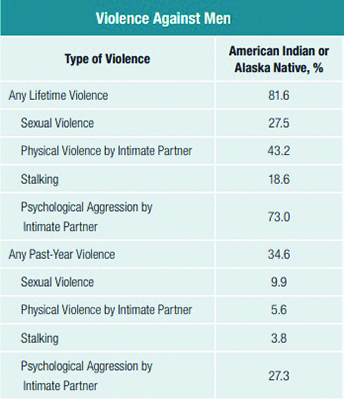
Training participants, many of whom were professional advocates and social workers employed by community engagement entities throughout Snohomish County, were offered plenty of time to properly process and ask questions for further understanding about the heavy subject matter.
“You all took a huge first step just by being here today and being open to education about sexual violence against men and boys, the many mental health issues that impact them thereafter, and how healing is possible by breaking the silence,” offered Lenny at the conclusion of the training. “I hope that when you all leave here you remember that failure to address the suffering of male victims has profound consequences for the survivor, his family and his community. By breaking the silence and creating safe spaces for these stories to be told, healing can begin.”
Following the training, Tulalip tribal member and Community Health employee Rocio Hatch offered her thoughts. “In this community we don’t really talk about sexual abuse at all, let alone abuse towards men and boys,” she shared. “I was very uneducated in this topic and am just thankful to have participated here today. I’m excited to bring this knowledge back to my coworkers and, hopefully, start to have these necessary conversations and expand our outreach.”
Megan Boyer, lead family advocate for Legacy of Healing, added, “There’s an absolute need of education around the victimization of men and boys. It’s very prevalent, and in my job I’ve become aware of just how big an issue this is, but nobody talks about it. We all have a responsibility to let our boys and men know we believe them, it’s not their fault, and we appreciate them for having the strength to tell their story.”
Sexual violence is just as much a men’s issue as it is women’s, but the current structure for speaking about violence in any form often comes at the exclusion of men as victims. This constrained dialogue limits the opportunity for survivors to tell their stories and be included as critical resources and advocates. Fully recognizing male victims will not only bring much needed support and assistance, but create safe spaces for men to address the lifelong impacts of sexual violence as a whole, which benefits everyone.
Offered resources for further understanding:
To view the PBS film Predator on the Reservation documenting how an IHS doctor preyed on Native boys for decades, please visit:
https://www.pbs.org/wgbh/frontline/film/predator-on-the-reservation/
To view the NIJ-funded study showing that Native American women and men suffer violence at alarmingly high rates, please visit:
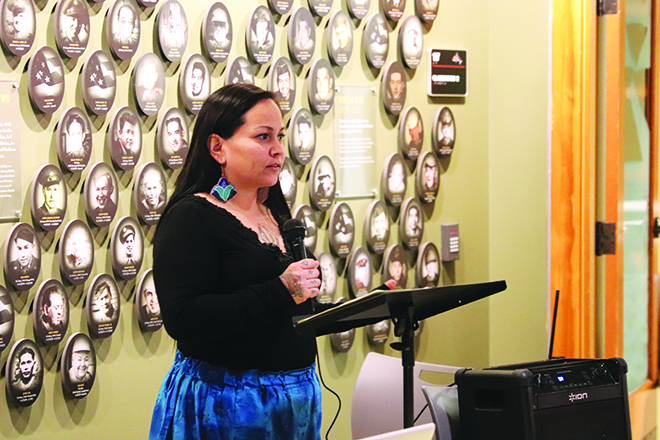
By Kalvin Valdillez
“My name is Natosha Gobin. I’m coming up on three-and-a-half years of my second round of sobriety,” shared the Tulalip tribal member to approximately one hundred community members. “When I was 21, I quit drinking right after my 21st birthday and I was sober for eight years. I’ve been teaching our language for almost twenty years now and it took a lot for me to realize, this second time around, the disservice I was doing to my job by drinking. The more we learn and reconnect with our ancestors and reconnect with our way of life, the more we realize that addiction is not our way. I have to apologize to my nieces and my children for normalizing my addiction. We have normalized addiction within our communities. It’s time for us to have more gatherings like this and say, this is not our way.”
Many happy tears were shed on the night of January 9th as people from all over Snohomish County gathered at the Hibulb Cultural Center. The celebration of sobriety, or wellbriety, has occurred every so often amongst the local recovery community at Tulalip for years. The gatherings took place namely at the Tulalip Resort Casino ballrooms and the Tulalip Dining Hall, and were hosted by passionate recovering addict and Tulalip tribal member, Helen Gobin-Henson. However, the wellbriety celebration is looking to become a staple event in 2020 as the Tulalip Problem Gambling program has adopted the wellbriety concept and will be hosting a celebratory dinner once a month throughout the year.
“In the spirit of unity to support health and wellness, we want to create a safe space for the community to gather and support each other in recovery. Whether you have one day or fifty years, we want to recognize your efforts in maintaining your sobriety,” said Robin Johnson, Substance Use Disorder Professional and Problem Gambling Counselor, who is approaching twenty years of sobriety herself.
Problem Gambling enlisted Native American Grammy Award Winner, Star Nayea, to host the event, who shared that she is celebrating her sobriety of seventeen years. The program also looked for guidance from Helen Gobin-Henson who was in attendance to share her story and celebrate with the community.
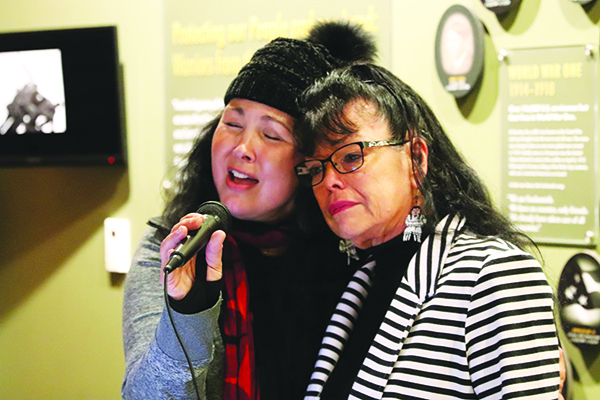
“There’s a lot of heart break when you’re recovering,” Helen tearfully admitted. “Keep fighting. Recovery works if you work it. I’m thankful for everyone, we praise you for coming together to honor your recovery. Stay safe and continue to walk with pride on the red road to recovery.”
Last year, the Problem Gambling program hosted a thirty-two-hour class at Tulalip called Recovery Coach Training. This course taught local recovering addicts, who were looking to help others, the essential tools on how to be supportive and help fellow addicts stay the course of sobriety. Six of those students who became certified recovery coaches were at the wellbriety dinner, cheering on their comrades in recovery, including Denise, a compulsive gambler who was caught embezzling money from her company in order to fuel her addiction.
“One of the things I learned about recovery coaching is you have to meet the person where they are,” Denise explained. “If you say you’re in recovery, you’re in recovery. It doesn’t matter how much time you have; a year, a day or a minute. Being a part of the recovery coach community and being a part of the solution for somebody else is something I embrace. If you are in recovery and made the decision that you want to pass on that message of hope, recovery coaching is the way. Let me walk with you and tell you what I’ve done, what worked for me and what didn’t. Let’s take a look at who you are today, and what you need to wake up in the morning and realize you’re going to be okay.”
One by one, community members stepped up to the open-microphone to share their personal story of sobriety. Some celebrating decades, some celebrating days – all equally met with rounds of applause that echoed throughout the cultural center halls.
“I graduated from Drug Wellness Court. I was the very first one,” said Verle Smith. “I did have a minor relapse of sorts after I graduated, but I got the opportunity to step up to the plate and figure out what my next addiction was, and it was gambling. I’m thankful for Robin, Problem Gambling and Family Services for leading me back to the red road of recovery because on the 20th I will have one year and I’m extremely proud of that.”
“The main reason I came tonight was to celebrate my recovery – nine months!” said Tulalip tribal member Winona Keeline. “This is the first time I’ve been in recovery and I just wanted to see the community come together and celebrate their journey. What stood out to me the most was how many of our youth were here and seeing that we are capable of coming together to celebrate life in a good way and show the youth a new way for our people to live.”
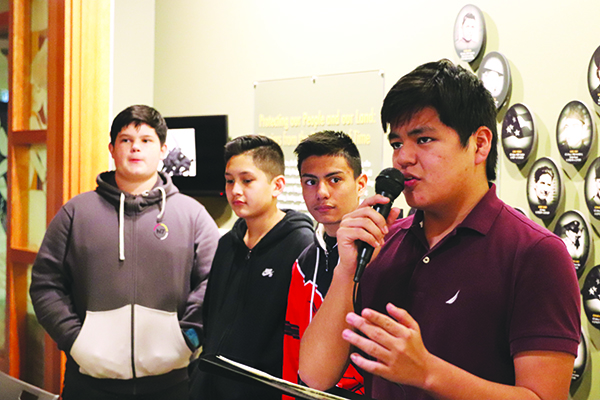
The Tulalip Youth Council offered the group a song and president, Kaiser Moses, followed up with some strong words to encourage people along their path of recovery.
“Thank you for showing each other that support for sobriety and taking back control of your lives and protecting your time,” Kaiser expressed. “One thing that I still carry with me that my mom always told me when I was little is that alcohol and other substances are like snakes. She told me a story Raymond Moses used to tell. There was once a guy who was walking up the mountain and it was really cold. There was a snake that was walking alongside him. The snake kept asking, ‘can you pick me up for warmth, it’s cold,’ and the guy kept refusing. But the snake was persistent and the guy eventually picked up the snake – and it bit him. The guy asked ‘why did you bite me?’ and the snake replied, ‘you knew I was a snake when you picked me up’. So, the moral is don’t pick up the snake or you will get bitten.”
A lot of knowledge, encouragement, pride and laughter was shared throughout the night. Wrapping up the two-hour event was a round of karaoke and a sobriety countdown. Starting at fifty, the community counted backwards to present day, celebrating the amount of time clean each person attainted.
“Tonight filled my heart,” Robin said. “The participants in our program worked hard, coming to group sessions every day and giving their all to their recovery, and it’s not acknowledged or celebrated nearly enough. They don’t know a lot of those people on the same path to recovery. This was a great opportunity for them to meet and share with each other. I wanted to show the community how hard our people are working to stay sober and allow them the opportunity to bring that education and knowledge back to the community, to heal the people from within.”
The Problem Gambling program is gearing up for a big year, beginning by hosting two upcoming Recovery Coach Trainings; one on January 18 and 19, the other on January 25 and 26. Both classes are held between the hours of 8:00 a.m. and 5:00 p.m. at the Tulalip Administration building. For further details, please contact Problem Gambling at (360) 716-4302.
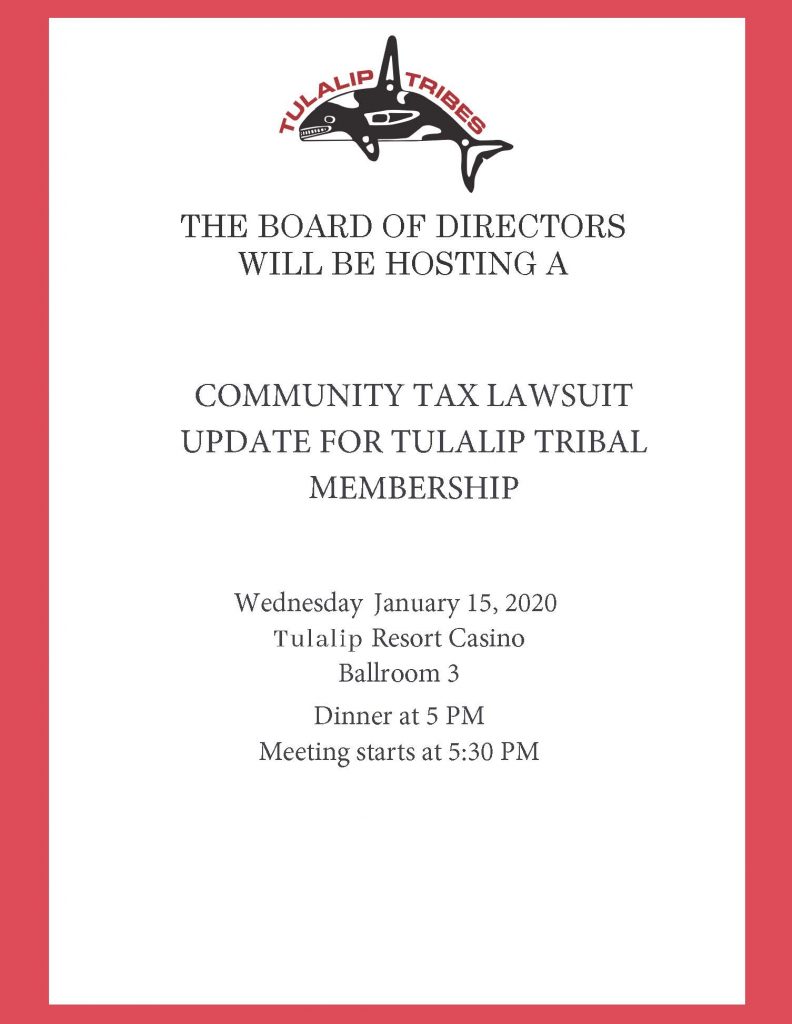
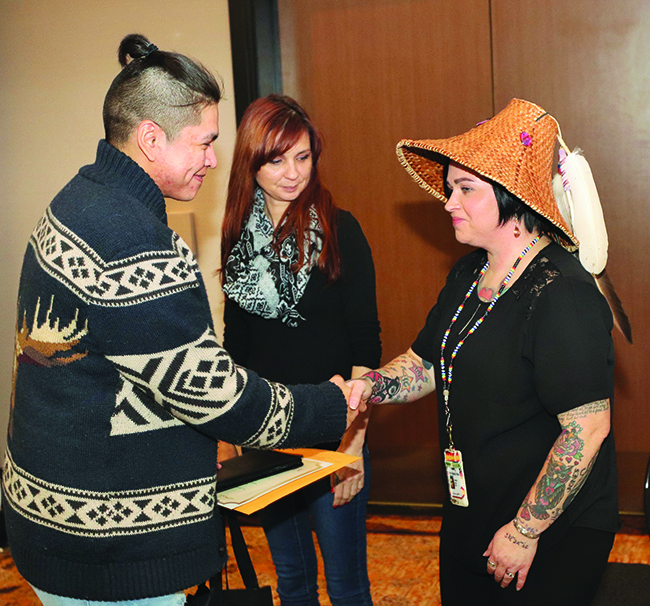
By Micheal Rios, Tulalip News
Educators, parents and others often place strong emphasis on college preparation and earning an Associate’s or Bachelor’s degree by traditional means. But that lengthy and expensive route often means accruing a ton of debt just to enter a highly competitive job market. College degrees may be the preferred goal for many, however there are a growing number of students who see a more hands-on future for themselves. For these individuals, unafraid of getting their hands dirty and learning the true meaning behind a hard day’s work, there is an abundance of opportunity within the construction industry.
Whether it be laborer, carpenter, ironworker, electrician or heavy equipment operator, there are countless positions available for work and advancement within the trades, especially for sought after minorities like Native Americans and women. A major access point for entry into these desirable career paths for tribal citizens and their families continues to be Tulalip’s own TERO Vocational Training Center (TVTC).
“Not everybody wants to be a doctor or lawyer. Not everybody wants a desk job. I’m a lifetime fisherman that started a construction company when it became apparent we could no longer sustain ourselves simply by living off the land,” said Tulalip Vice-Chairman Glen Gobin. “Some want to be outside working with their hands. That’s what brings people to our training program, it gives them an opportunity to get exposure to all the different trades, learn how to function on a job site and how to get work. Graduates of TVTC enter a section of the workforce that is in high demand.”
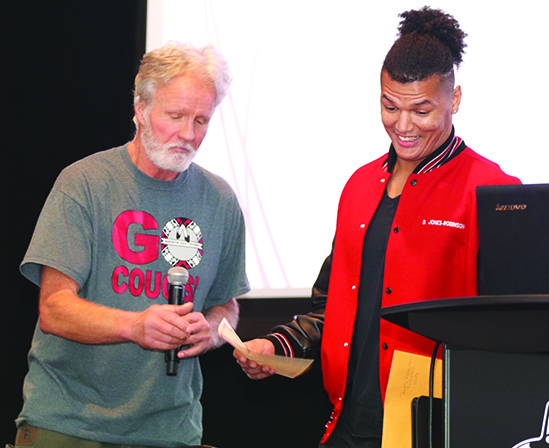
In fact, a quick glance around the greater Seattle area and onlookers are sure to see more cranes than they can count. Along the I-5 corridor, from Tacoma to Everett, construction projects are booming and many on-site jobs continue to go unfilled. While other career pathways may be oversaturated and hard to come by, those within construction trades are thriving. According to the U.S. Department of Labor, open construction positions are expected to increase by more than 700,000 jobs nationally through 2028, a faster growth than any other occupation. In Washington State alone, there are nearly 3,000 unfilled construction jobs that pay much more than the average state wage.
Brighter horizons and prospects galore were among the reasons so many gathered to celebrate the TVTC autumn cohort’s achievement on a December morning at the Tulalip Resort’s orca ballroom. Fifteen students (including eight Tulalip tribal members and three women) were honored with a graduation banquet for their commitment to building a better future. Nearly 200 guests attended, including trade union representatives, several construction employers, and many cheerful family members.
“Our TVTC program is 100% supported by grant funds,” explained TERO director Summer Hammons. “Our TVTC graduates earned various certifications and college credits, while learning many skills that will undoubtedly make an impact on their future. We thank the Tulalip Tribes, Washington State Department of Transportation, Sound Transit, and the Tulalip Cares charitable fund for always supporting us. These organizations and community partners are ensuring our future leaders have viable career paths.”
TVTC is the first and only state and nationally recognized Native American pre-apprenticeship program in the entire country. The program is accredited through South Seattle Community College and Renton Technical College, while all the in-class, hands-on curriculum has been formally approved by the Washington State Apprentice and Training Council.
The sixteen-week program provides 501-hours of hands-on instruction, strength building exercises, and construction skills that can last a lifetime. In addition, students are trained and awarded certifications in flagging, first aid/CPR, industrial fork lift and scissor lift, 40-hour HAZWOPER, and OSHA 10-hour safety.
Homegrown Tulalip citizen Demitri Jones opted to retake the class after not being able to complete it his first time around. To jumpstart an all-new career path as a carpenter, he had to grit and grind. He maintained his full-time position as a security officer working the dreaded graveyard shift, while sacrificing convenience and lots of sleep to take the TVTC class during the day.
“My biggest takeaway is learning the benefits of hard work and dedication,” reflected Demitri. “My advice to those who already have a job but are interested in taking the class, if you really want it then make it happen. Creating a routine was so important, but knowing in the end it’ll all be worth it kept me going.”
His instructors noted he was the first in his class to gain employment. “I’m a carpenter’s apprentice right now and looking forward to journeying out, becoming a foreman or even superintendent,” added the ambitious 26-year-old.
Along with gaining a wide-range of new employment opportunities via the trades, seven diligent students took advantage of the educational aspect and earned their high school diploma.

Three hardworking ladies were among the graduates, Carla Yates (Haida), Cheyenne Frye (Arikara) and Shelbi Strom (Quinault). Each wanted to acquire a new skillset while creating a pathway to a better and brighter future.
“I really liked the class. I met some really cool people and learned so many new skills that I would have never been exposed to if I didn’t try it out,” said 20-year-old Cheyenne. Originally from North Dakota, her family relocated to the area so her mom could take the TVTC program. After graduating and seeing all the opportunity now available to her, she convinced her daughter to follow suit.
“I had zero experience with construction tools, like the nail gun and different saws. All of that was pretty intimidating at first, but after I learned to use them properly it became a lot of fun using them to complete projects,” admitted Cheyenne. “Both my parents have jobs as plumbers on the new casino project now. Hopefully I can join an electricians’ or sheet metal union and get work on that project, too.”
With hundreds of skilled-trade workers retiring every day across the state, the construction industry is in need of the next generation workforce to help build an ever-growing Snohomish County and surrounding Puget Sound communities. In the Seattle-Bellevue-Everett area alone, construction employment increased by 6,400 jobs between March 2018 and March 2019, according to the Associated General Contractors of America. These are well-paying jobs that are available to people straight out of high school. It takes some grit for sure, but for those folks with a strong work ethic and can-do attitude, they can find themselves running a construction company of their own someday.
“When our student graduates go out into the world of construction, they can compete on equal footing with anybody,” declared TVTC instructor Mark Newland during the graduation ceremony. “We’re gaining traction with union companies and construction employers all over the region.
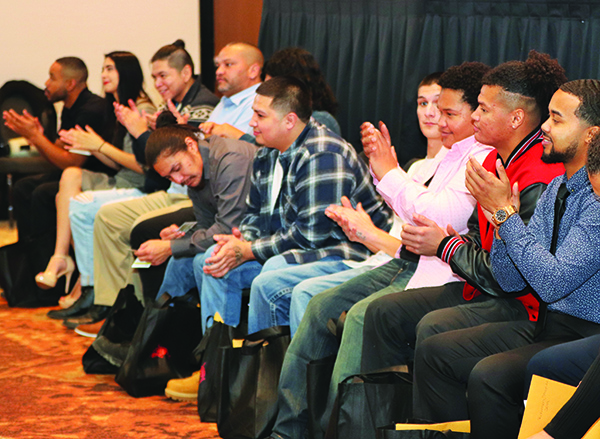
“I just can’t say enough about this class,” he continued. “From day one, they were engaged, helping each other out, and understood what they had to gain by putting their nose to the grindstone. Really amazing stuff! They’ve given me so much as their instructor and I wish them all the best.”
Those interested in being among the next available TVTC cohort or would like more information about the program, please call (360) 716-4760 or email Ltelford@tulaliptribes-nsn.gov
Please use the following link to download the January 11, 2020 issue of the syəcəb

By Ryan Miller, Environmental Liaison- Program Manager, Tulalip Tribes Treaty Rights Office
No state or local government law can interfere with tribal self-governance or diminish the rights protected by federal treaties.
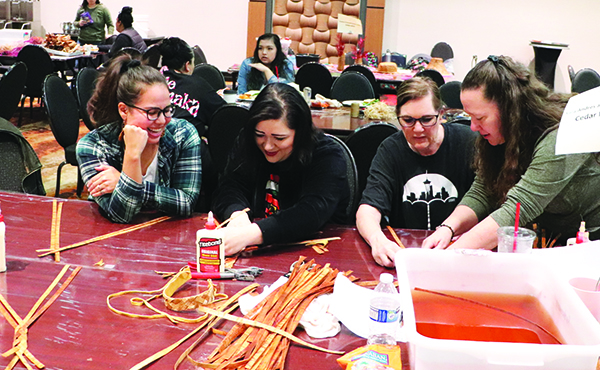
By Cullen Salinas-Zackuse, Tulalip News
On Sunday December 15th, at the Tulalip Resort Casino, fifteen of Tulalip’s cedar weavers came together to teach the community how to weave. They shared their expertise and enjoyed their time teaching traditional ways of making cedar baskets, headbands, dolls, jewelry and many other cedar creations. It was the first time this many Tulalip weavers came together to enrich the community with cultural activity of this nature.
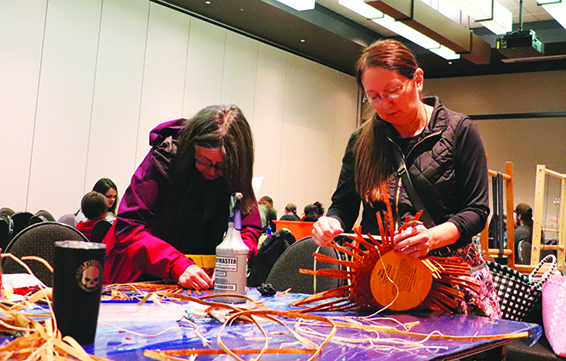
“All the teachers have a lot of teachings and history,” said event coordinator,Virginia Jones, on how the weavers showed the importance of carrying on these skills for all the generations after us.
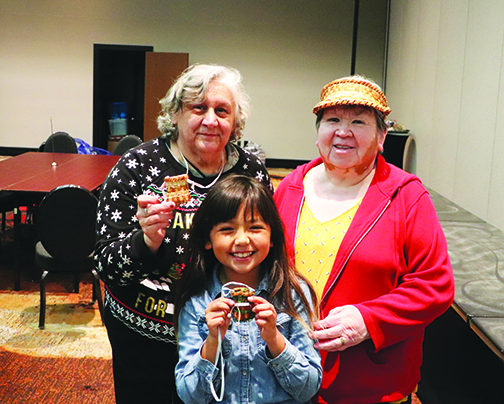
Weaver Clarissa Johnny talked about how she learned from Anna Jefferson (Lummi) how to peel and process the cedar, and how to cure it. “She [Anna] was taught how to respect the forest and pray before taking anything from the cedar tree. Pray before you leave and thank the cedar tree for giving up part of its life for us”.
One of the younger weavers, Shylee Burke, said that she “learned from her aunties and it is passed down from generation to generation”, because she was always around it as a child. It wasn’t until later in life that she said learned how to “put her hands to work,” learning how to weave.
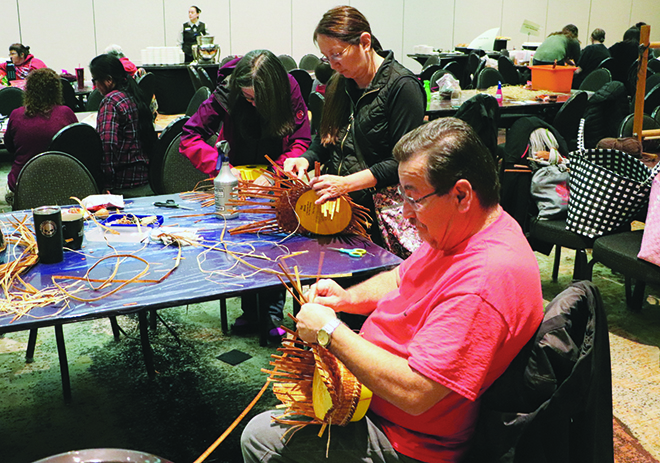
Overall, everyone who attended took away something from this event. Whether it was learning how to carry on the culture or different weaving styles, it was a fun way to come together and share culture with the community.
By Cullen Salinas-Zackuse, Tulalip News
When getting awards in academia, typically what people think of is a straight edge, hard working kid that worries about grades and school comes to them effortlessly. Not all students function the same way, some shine differently. When going through the rigorous journey of school these kids did not have the typical ride and with their resilience and efforts they were able to endure their situation and succeed. This semester these are the Native youth that were nominated and recognized for the outstanding work and efforts.
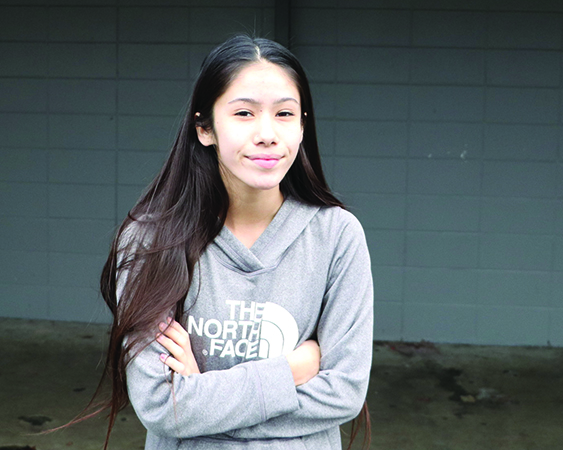
The student of the semester for middle school is 8th grader Lenay Chuckalnaskit. She recently moved from Nespelem Washington, to Marysville and now attends Totem Middle School. She was noticed for her hard work while going through a tough transitional phase in life with friends, grades, and a good attitude. She became a student athlete and participates in track and field 100-meter dash/hurdles, volleyball, and gymnastics. Lenay also participates in the cultural activities by Powwow dancing. With all the activities Lanay is doing she is also able to maintain a 4.0 GPA, as she is driven and has only missed two days of school this year.
Lanay eventually wants to have a career in the medical field but is not positive where yet. She thanks her parents and family for supporting her along her academic journey. She also looks up to her 19-year-old sister for being her role model and leading by example on how to be successful in school.
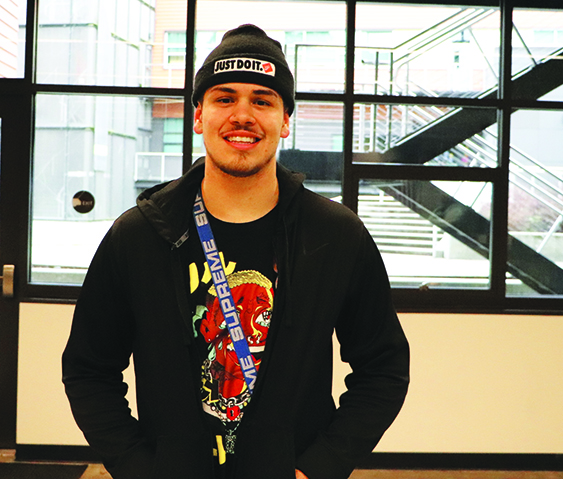
The student of the semester for high school was nominated because of his growth as a student. Tristian Hopkins is a senior at Marysville-Getchell High School. He started his high school career at Tulalip Heritage, where he felt comfortable going to school with friends and family. He eventually felt distracted and wanted to branch out and explore a bigger school and that is where he found himself at Marysville-Getchell Highschool. Going from 100 kids who are friends and family to a school that has 1,500 kids usually seems like a tough transition but Tristian looked at it as an opportunity for growth. He was able to find a new crowd and focus better in his academic work. He pulled his grades up to above a 3.0 GPA, but not without sacrificing a year playing football. Choosing to focus on school over football did not diminish his love for the game. His senior year he came back and played for the varsity football team. Tristian was able to rack up 8 tackles his last 3 games and was honorary captain for a couple of those games.
Looking to the future, Tristian plans on applying to Arizona State University. He wants to become an aerospace engineer and work on building airplane parts. It makes sense when you ask him his favorite subject, he says physics. Academic careers hardly ever go as planned and not all are perfect, but along the journey there is always room to grow. That is what Tristian showed he can do.
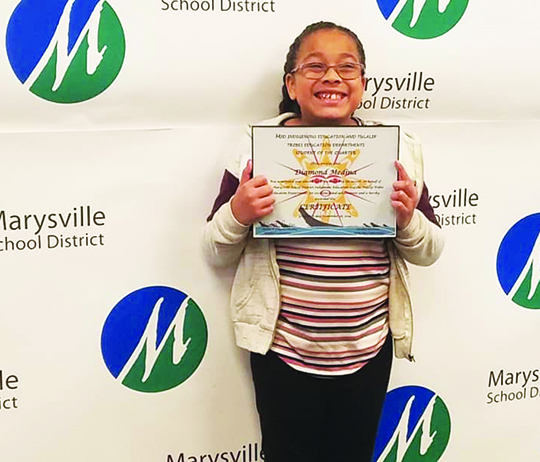
Diamond Medina is a sweet, kind young lady. She a fifth grader at Tulalip/Quil Ceda Elementary where she has grown into a positive role model. She always stays focused and gets her work done. Multiple teachers noticed she is organized and advocates for herself and her learning. Diamond doesn’t get distracted easily as she’s always on time for her groups and utilizes her resources while she is in school. Overall, she keeps her positive mindset no matter her situation at school and is always smiling.

By Micheal Rios, Tulalip News
Extravagantly festive Christmas trees and wreaths, each decorated with its own unique theme and style, brightened the Orca Ballroom at the Tulalip Resort Casino during the 34th annual Festival of Trees. The week-long celebration kicked off December 3rd with opening night festivities, continued with the excitement-filled Gala Dinner and Live Auction on December 6th, and concluded December 7th with the family friendly Teddy Bear Breakfast.
Each year, thousands of community members take part in the Festival of Trees – including volunteers, sponsors, and attendees – to raise funds for Children’s Services at Providence Regional Medical Center in Everett. For more than three decades, Providence Children’s Center has been providing comprehensive, family-oriented care and highly specialized therapies – such as physical, occupational, speech and feeding therapy – for children with a wide variety of special needs.
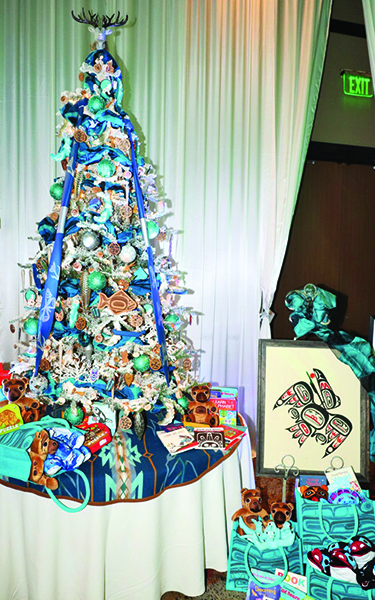
“Knowing this is one of the largest charitable events for Snohomish County, it is appropriate for us to host and participate with goodwill and sharing the opportunity to help all children in need,” explained Marilyn Sheldon, manager of Tulalip Tribes Charitable Fund, on the importance of hosting the Festival and being the title sponsor. “We recognize that over 50% of Tulalip’s population is 0-24 years of age and Providence is our local hospital for care most tribal members use for emergency situations and other needs. Also, this event brings many people to our facilities for the week and encourages them to come back and host their own business/charity event at our venue.”
A highlight of the holiday season, the Festival of Trees provides entertainment for countless families and children. Whether it’s a black-tie evening with a three-course dinner or a free afternoon with cookies and Santa, the Festival’s variety of events offer holiday cheer for all kinds of crowds. The stunningly decorated Christmas trees won’t soon be forgotten as their specialized themes like ‘Merry Christmas from Mickey Mouse’ and ‘Christmas Under the Sea’ to ‘Arctic Winter Dreams’ and ‘A Celebration of Tulalip Culture’ capture the imagination.

During the elegant gala dinner and live auction, the dazzling Christmas trees and wreaths were sold to the highest bidders, with proceeds going to Providence Children’s Services. Several of the trees were reserved to be put on display throughout the Children’s Center as a special treat for hospitalized kids this holiday season.
“For more than three decades, this fun-filled, weeklong series of events has raised more than $12 million dollars to support the healthcare needs of children in our community,” stated Festival Chairs, Scott and Kippy Murphy. “Over the years, we have been in awe of the generosity shown at this event and it is that spirit of generosity and collective effort of our community that inspired us to choose this year’s theme – Season of Miracles.”
The generosity of countless donors and Festival attendees supports Providence in growing and expanding specialized therapies, equipment and educational classes that really does make miracles happen for children and families at Providence every day. Total monies raised this year topped $1.2 million, with all funds going directly to Providence programs and services such as Pediatrics, the Newborn Intensive Care Unit, the Children’s Center, the Autism Center, and Camp Prov, a summer camp for children with special needs.

For nearly two decades, Tulalip Tribes has been an important partner to Providence in the Northwest Washington Region, by helping provide the funding and support needs to care for the health of our growing community. Contributions made by Tulalip to Providence General Foundation since 2002 have totaled more than $750,000. For their dedication to the Festival of Trees, the Tulalip Tribes were honored with the Spirit of Festival Award at last year’s Gala and live-auction.
“The lives of thousands of children, that includes Tulalip tribal children, will be helped thanks to the generosity received from the Festival of Trees fundraising efforts,” said Board of Director Mel Sheldon, fourteen-year member of the Providence General Foundation. “We are very fortunate to have a relationship with Providence Medical Center and to support such an amazing opportunity that really looks at the bigger picture. We all want to do our part to create a sustainable and healthy community.”

One of Snohomish County’s largest and most well attended holiday events, the Festival of Trees has been a beloved community tradition for 34 years. The annual outpouring of community spirit, combined with a magical setting, delivered a wonderful event that united many during the holiday season.